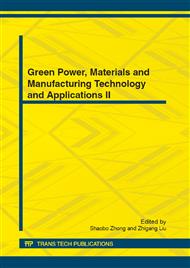p.296
p.301
p.306
p.311
p.315
p.320
p.327
p.333
p.338
Research on Stability Bearing Capacity for Pole and Tower Compression Members with Two Legs Connection
Abstract:
In order to research the stability bearing capacity of high strength pole and tower compression members, analytical method and numerical simulation method were used to study stability on high strength axial compression members. Researched the impact of different slenderness ratio, different cross-section factors on the bearing capacity; energy relationship was using in analytical method, the boundary conditions issue is simplified according to different end restraint capacity; the failure modes and stability bearing capacity of members were studied by numerical simulation. Compared with the experimental results show that the numerical simulation and elastic theory analytical solution overestimate the capacity of members, but the numerical results have better agreement than the elastic theory analytical solution, which can show the numerical simulation method is right. Experiment method can obtain more secure mechanical behavior of high-strength angle steel member with axial loading.
Info:
Periodical:
Pages:
315-319
Citation:
Online since:
November 2012
Authors:
Price:
Сopyright:
© 2012 Trans Tech Publications Ltd. All Rights Reserved
Share:
Citation:


